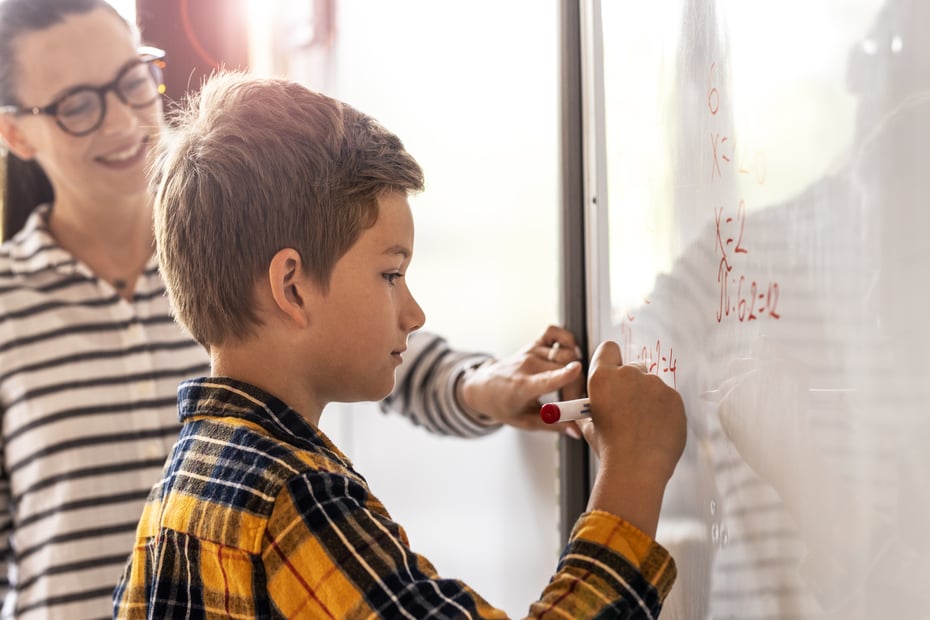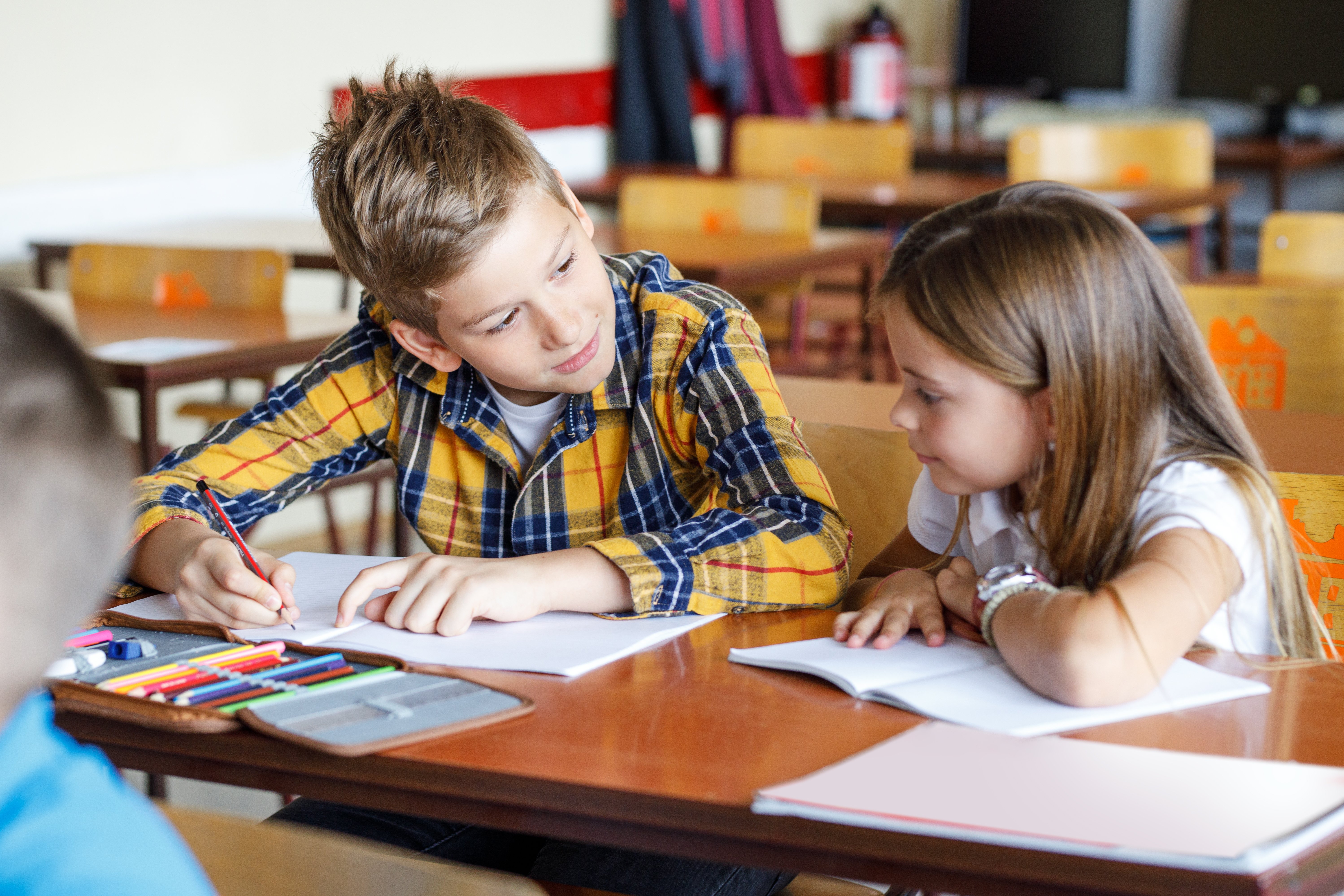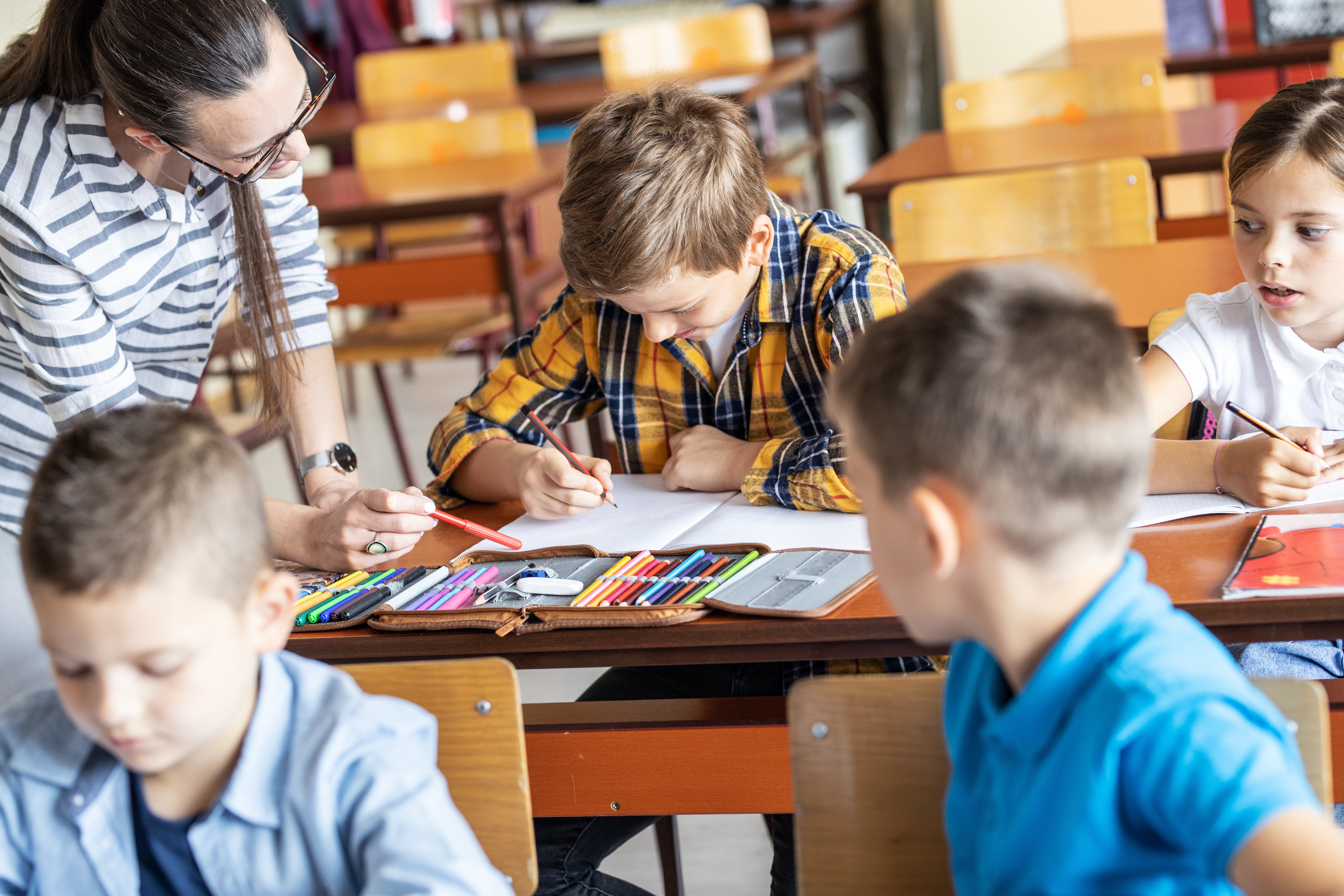Anxiety and Hyperactivity: A Teacher's Guide

Contents
Mental health, how we think, feel and regulate our emotions, is something that we all have. Just like our physical health, mental health is something that can deteriorate at different points in our life and we may find ourselves needing extra support and help. Unfortunately children and young people aren’t exempt from such difficulties, which can be a real concern for many parents. One way you can help is to understand the signs young people show when they're struggling with their mental health.
What is the link between anxiety and hyperactivity?
Anxiety is our body’s natural response to stressors in our environment. It's a part of the fight or flight response where our brain alerts us to danger and prepares our body to respond. In so many situations it is a useful response which keeps us safe. Increasingly though, anxiety can dominate the lives of many of us, including children and young people. For these young people, their bodies have begun to sense danger where there is none and they experience heightened emotions a large proportion of the time as a result. This can look like poor focus, difficulty concentrating, irritability or often seeming agitated and on edge. Perhaps these children seem to ask a lot of questions or are always on the move, struggling to settle and sit still. It is often these hyperactive symptoms that show themselves in the classroom.
How to support students with anxiety and hyperactivity
It is important for children who are persistently anxious that the right support is available for them. As a teacher or member of support staff you can make a huge difference to the lives of your children and their experience at school. Here are just some of the ways you can help the students in your classroom with anxiety and hyperactivity:
1) Supporting anxiety and hyperactivity through the curriculum
What you teach, your lessons, assemblies and activities can all be a helpful way to get children thinking about their mental health. Finding ways to talk about emotions, how they feel, how this impacts their behaviour and what they can do to help themselves is a really important way to support all students, particularly anxious ones. This will help them to understand their experiences better and also learn how to cope with them better.
2) Supporting anxiety and hyperactivity through communication

If you have identified a student in your class who seems to be struggling with anxiety and hyperactivity, find a way to begin a conversation with them about this. Ask them what their experience is like, what does it feel like for them, what makes it worse or better, ask them what they think can be done to help. Make sure your communication with them is clear and consistent so they know what to expect and they know you are there to help. This applies to your class as a whole too. If your communication is calm, clear and consistent this will have a positive impact on the experience of all students in your class.
3) Supporting anxiety and hyperactivity by identifying stressors and making adjustments
As you begin to understand what might be contributing to a student’s anxiety it is easier to understand what you can do to help. You can do this not only through speaking with them or their parents about potential stressors, but also through observation. It may be that you have noticed their hyperactivity is worse at certain times of the day or in specific situations. As you identify these stressors you will feel better able to see what adjustments you can make to help that child. For example maybe they need to sit in a quieter, less distracting part of the room, or maybe they need a transitory activity to help them settle.
4) Supporting anxiety and hyperactivity by promoting calm

Have a think about the routines, habits and patterns you have in your classroom and whether they promote calm. There are some great ways each day you can help your students to settle rather than escalating their emotions. For example you could have a mindfulness moment each day for 5 minutes. That could be doing some colouring together or taking a moment to concentrate on something concrete and tangible like their breathing. Perhaps you could get them to go through their 5 senses and see if they can name something they can see, taste, smell, hear or feel. Whatever it is, find a way to make this a part of their routine each day. This could be something you do as a whole class or just with specific individuals who would really benefit.
5) Supporting anxiety and hyperactivity through exercise
Exercise of any sort alleviates stress and can help hyperactive students to release some of the built up adrenaline they are experiencing. Where possible try to fit in movement breaks into your lesson or day. Short bursts of physical activity in the midst of an activity can be a great way to help anxious children settle. If you’re able to get outside during the day for moments of exercise too this will be a huge help.
6) Supporting anxiety and hyperactivity using worry boxes
For younger children, having somewhere physical to put their worries can be incredibly helpful. Sometimes the act of writing it down and discarding it into something like a worry box can be enough to help them feel calm and settled. You can also encourage them to write their name if it is a worry they would like to talk about with someone, but otherwise leave anonymous. Older children sometimes benefit from a worry journal instead.
7) Supporting anxiety and hyperactivity using feeling scales
 There have been lots of different feelings scales developed over the years but the premise can be a really helpful one for anxious and hyperactive children. Again, you can create this for your class where each child can place themselves on the scale or for individuals where they have their own scale. On the scale 1 = feeling calm and 5 = extremely heightened anxiety. You can encourage the child to tailor their scale to their own interests and needs, perhaps drawing what it feels like to be at each stage and what techniques they can use to help themselves. Using a scale like this can help children to acknowledge how they are feeling and respond to these feelings as well as noticing when they are escalating.
There have been lots of different feelings scales developed over the years but the premise can be a really helpful one for anxious and hyperactive children. Again, you can create this for your class where each child can place themselves on the scale or for individuals where they have their own scale. On the scale 1 = feeling calm and 5 = extremely heightened anxiety. You can encourage the child to tailor their scale to their own interests and needs, perhaps drawing what it feels like to be at each stage and what techniques they can use to help themselves. Using a scale like this can help children to acknowledge how they are feeling and respond to these feelings as well as noticing when they are escalating.
8) Supporting anxiety and hyperactivity using sensory space
A final way you can help students with anxiety and hyperactivity is to create a small sensory space or box in your classroom which students can use when they are feeling overwhelmed. Again this could be something individual for one child or something that all children have access to. You can fill the box or space with items to help students to relax such as toys, smells or materials that are calming. You can also include some colouring sheets or other mindful activities. If it is a personal box for a child you could encourage them to put pictures in it of people, places or things that are important to them.
 Supporting students with their mental health, whilst so necessary, can also be difficult and take its toll on you. Make sure you are seeking support for yourself from others. It might be that you need the assistance of other staff or professionals to best help your students. You can also encourage the families of your students to speak to their GP if they are concerned about their child’s anxiety. If you feel some students would benefit from speaking with a counsellor we would love to be able to support you in that.
Supporting students with their mental health, whilst so necessary, can also be difficult and take its toll on you. Make sure you are seeking support for yourself from others. It might be that you need the assistance of other staff or professionals to best help your students. You can also encourage the families of your students to speak to their GP if they are concerned about their child’s anxiety. If you feel some students would benefit from speaking with a counsellor we would love to be able to support you in that.
f you have students who you think would benefit from our counselling service, why not book a meeting and we'll let you know how Mable Therapy can support your school.